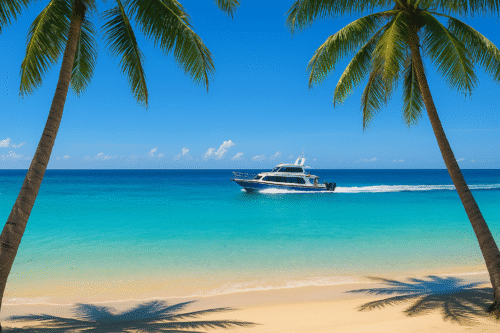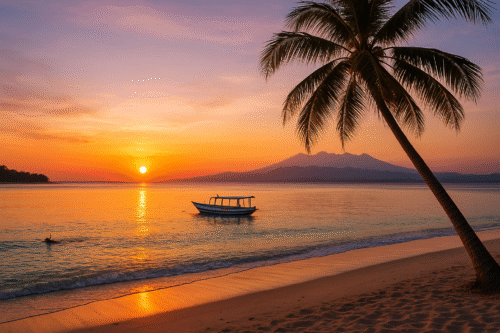The Gili Islands – Gili Trawangan, Gili Air and Gili Meno – are world-famous for their warm, clear waters, vibrant coral reefs and rich marine life. Whether you’re a beginner snorkeller or an experienced scuba diver, the Gilis offer something special for everyone who loves the ocean.
Snorkeling on the Gili Islands
Snorkeling is one of the easiest and most rewarding activities on the Gilis because many reefs lie just a few metres from the shore. All three islands have beaches where you can wade in and see colourful fish, coral gardens and even sea turtles.
Popular snorkeling areas include:
- Gili Trawangan: The northern and northeastern beaches are known for calm water and easy access to reefs.
- Gili Meno: Famous for the underwater Nest statues – a circle of submerged human-shaped sculptures that have become an iconic snorkeling spot.
- Gili Air: The east and northeast coasts offer shallow reefs and frequent turtle sightings.
Snorkelling trips by boat are widely available and take visitors to several spots around all three islands, often including turtle-watching areas and coral gardens. Equipment can be rented easily from beach stalls, dive shops or tour operators.
Diving on the Gili Islands
The Gilis are among Indonesia’s top scuba diving destinations thanks to warm water (typically 27–29 °C / 80–84 °F), good visibility and a variety of dive sites suitable for beginners through advanced divers.
There are more than 25 dive sites around the islands, with highlights including:
- Shark Point: A popular site near Gili Trawangan where divers often see blacktip reef sharks, turtles and large schools of fish.
- Turtle Heaven: Known for frequent encounters with green and hawksbill turtles.
- Bounty Wreck: A sunken pontoon near Gili Meno covered in corals and home to countless reef fish.
- Meno Wall: A gentle wall dive with colourful coral formations, great for spotting macro life.
All three islands have reputable dive centres offering courses from beginner Open Water certifications to advanced and specialty dives. English-speaking instructors and safety-focused operators make it easy for newcomers to learn in a relaxed environment.
Marine Life
The surrounding waters are part of the Coral Triangle, one of the most biodiverse marine regions on Earth. Divers and snorkellers can see an array of reef fish – clownfish, parrotfish, angelfish and butterflyfish – as well as sea turtles, moray eels, cuttlefish and occasionally rays and reef sharks.
Conservation groups on the Gilis work to restore damaged reefs and encourage eco-friendly practices, so visitors are asked to avoid touching corals or marine animals and to use reef-safe sunscreen.
Practical Tips for Visitors
- Best season: Diving and snorkeling are good year-round, but the clearest visibility is often from May to October during the dry season.
- Stay safe: Always follow guides’ instructions, wear a life vest if needed, and avoid stepping on coral reefs.
- Bring your own mask if you can: Rental gear is widely available but having your own often means a better fit.
- Book with certified operators: Look for dive shops affiliated with organisations like PADI or SSI for quality and safety.
Whether floating above coral gardens with a snorkel or diving deeper to explore wrecks and walls, the Gili Islands deliver unforgettable underwater experiences. With easy access, calm warm water and abundant marine life, it’s no wonder the Gilis remain one of Indonesia’s favourite spots for ocean lovers.





